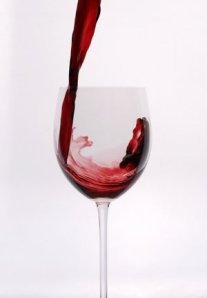September is named after Demeter, the Greek goddess of harvest
In the Roman calendar, September was the seventh month because in Latin, septem means “seven” and septimus means “seventh”
September is a month of an equinox, thus the change of season from summer to autumn in the northern hemisphere, and from winter to spring in the southern hemisphere
No other month ends on the same day of the week as September in any year
September begins on the same day of the week as December every year
One of four months with a length of 30 days
My favorite poem is the one that starts Thirty days hath September because it actually tells you something. (Groucho Marx, actor & comedian)
September was called “harvest month” in Charlemagne’s calendar, Gerstmonath (barley month) by Anglo-Saxons, and Herbstmonat (harvest month) by Swiss
September births are celebrated with forget-me-not, morning glory, and aster (birth flowers) and sapphire (birthstone)
September astrological signs are Virgo (until September 21) and Libra (from September 22 onward)
Departing summer hath assumed
An aspect tenderly illumed,
The gentlest look of spring;
That calls from yonder leafy shade
Unfaded, yet prepared to fade,
A timely carolling.
– William Wordsworth, September
Woody Allen directed a movie called September (1987), a movie starring Mia Farrow, Elaine Strich and Jack Warden
If a guy hits .300 every year, what does he have to look forward to I always tried to stay around .190, with three or four RBI. And I tried to get them all in September. That way I always had something to talk about during the winter. (Bob Uecker, Baseball icon )
September is the month for increasing awareness in attention deficit hyperactivity disorder, atrial fibrillation, baby safety, pediatric cancer, gynecological cancer, leukemia & lymphoma, mold, campus safety, head lice prevention, infant mortality, ovarian cancer, prostate cancer, skin care, Alzheimer’s, sickle cell anemia, platelet disorder, food allergies, and childhood obesity.
September is the month for enjoying these culinary delights: California wild rice, ice cream sandwiches, chicken, low cholesterol-low fat pizza, honey, mushroom, prime beef, papaya, whole grains, ice cream milk shakes, rice, ethnic foods, apples, biscuits, potatoes, fruits & vegetables, and the All-American breakfast.
September is increasing self-awareness by participating in or promoting strategic thinking, wilderness activities, baby safety, square dancing, backpack safety, good manners in children, eating chicken, sports & home eye safety, updating your resume, food safety, better breakfasts, signing up for a library card, and pleasuring your mate.
September is the month for embracing animals by celebrating save the koala, service/guide dogs, save the tiger, responsible dog ownership, healthy happy cats, and pet memorials/animal remembrance
September is the month for recognizing bourbon heritage, California wines, saving for college, people skills, fall hats, osteopathic medicine, women friendships, subliminal communications, Hispanic heritage, home furnishings, and pianos.
September is the month for promoting cholesterol education, hunger action, million minute family challenge, coupons, DNA genomic & stem cell education, sewing, self-improvement, prospering where you are planted, healthy aging, superior relationships, being prepared, and shameless promotion.
October. This is one of the peculiarly dangerous months to speculate in stocks in. The others are July, January, September, April, November, May, March, June, December, August, and February. (Mark Twain, humorist)
“The breezes taste
Of apple peel.
The air is full
Of smells to feel-
Ripe fruit, old footballs,
Burning brush,
New books, erasers,
Chalk, and such.
The bee, his hive,
Well-honeyed hum,
And Mother cuts
Chrysanthemums.
Like plates washed clean
With suds, the days
Are polished with
A morning haze.”
– John Updike, September
I still have the Pause button set, but will return soon – so, this song is a fitting to end this post. Did you take in any of the songs?

